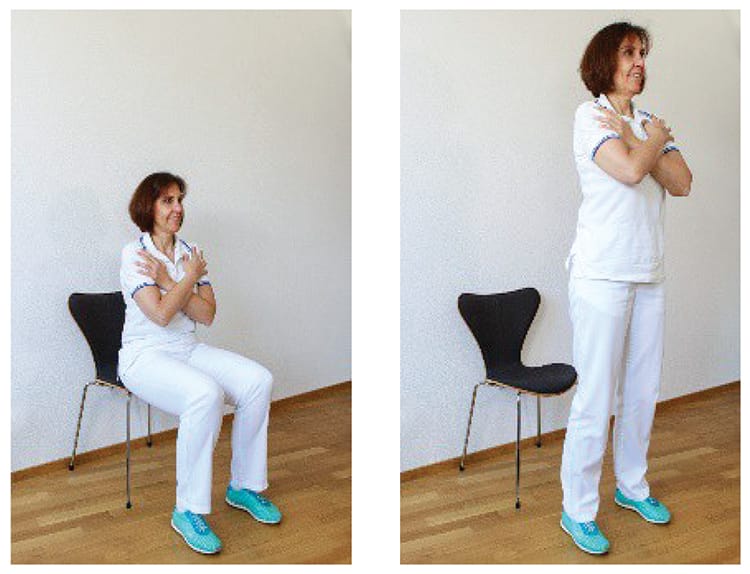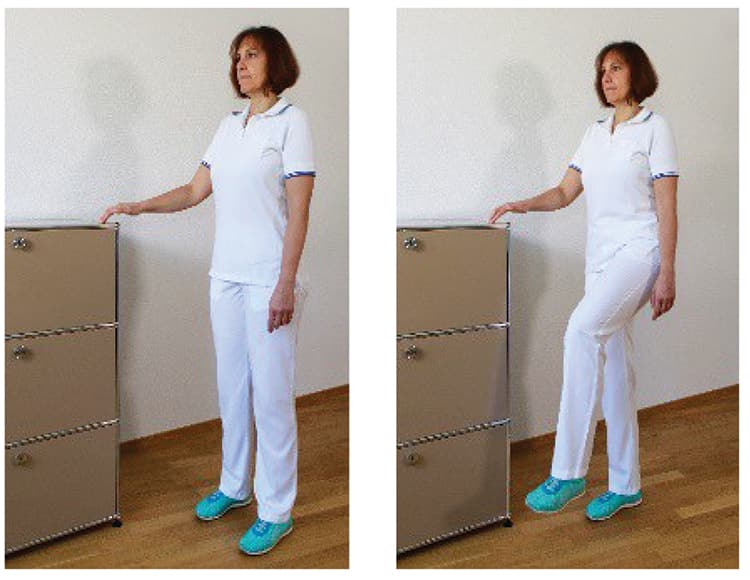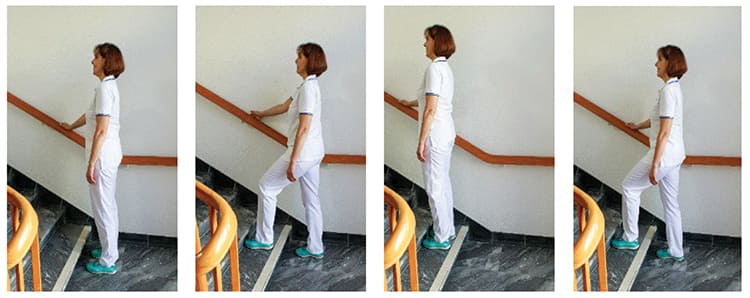Life Extension Magazine®
Doctors have been obsessed with testing single interventions, be it a dietary supplement, drug, or lifestyle, to ascertain if meaningful disease risk reductions can be achieved.
If miraculous results are not discovered, the drug, nutrient, or healthy lifestyle is sometimes discredited by the clinical investigators and pessimistic media.
An increasing number of enlightened researchers are coming to the realization that to protect against degenerative diseases in humans, more than one concurrent intervention is needed.
For the first time ever, a tightly monitored, randomized controlled clinical trial investigated the combination of vitamin D, omega-3s and a simple home exercise program on invasive cancer risk in older people.
After only three years, there was an astounding 61% reduced risk of invasive cancers in the vitamin D + omega-3 + home exercise group compared to placebo. 1
This same study found smaller cancer hazard ratio reductions in groups receiving only vitamin D (24%), or only omega-3s (30%) or only home exercise (26%). But nothing compared with the robust 61% reduced risk for invasive cancer when all three interventions were used together.1
Invasive cancers are malignancies that grow past the original site and spread to healthy tissues.2 They generally require grueling treatments that often fail to completely cure.
A record 609,000 Americans will perish this year from malignant diseases.4
Cancer prevention is increasingly being prioritized by the medical mainstream. One reason is the toxicity and failure rates of conventional therapies.3
This editorial describes how low-cost nutrients and modest physical activity can protect against one of our most feared diseases.
Consumers are justifiably confused by what appear to be conflicting studies as they relate to the anticancer benefits of various lifestyles, diets, nutrients, and drugs.
A closer look at the data, however, reveals nuances that explain why benefits observed in some studies are not always replicated in what appear to be similar clinical trials.
Intervention trials that aim to block multiple pathways of cancer development are relatively rare. The concept of simultaneously combining several anti-cancer approaches has only recently been considered as it relates to meaningful cancer prevention.
Vitamin D Should Be Taken Daily
Misunderstandings about supplements and healthy food choices contribute to mixed findings that are often erroneously sensationalized by media outlets.
For example, vitamin D is a fat-soluble nutrient that is stored in the body.
Because of this, many doctors today prescribe “bolus dosing,” which is high-dose vitamin D, administered weekly, monthly, or even annually. The doses are as high as 150,000 IU every three months to 500,000 IU every year.5
While these high periodic doses may ensure better patient compliance, it is not how the body normally obtains vitamin D.
Results from some human studies indicate that mega-dose vitamin D may increase serum concentration faster but there is no evidence to support decreased risk of falls, fractures, or bone mineral density.5,6
Cancer Often Develops Slowly
Short-term studies of interventions designed to reduce cancer risk are suspect because some study subjects are likely harboring malignancies that have not yet reached clinical or symptomatic relevance.
We have previously cited examples of studies that exclude cancers diagnosed the first year and find more robust cancer prevention benefits in later years by improving calcium, vitamin D and other nutrient levels.7-9
Even the cancer prevention study described in the opening of this article lasted only three years. The researchers acknowledged this limited period might not fully reflect the longer-term benefits of vitamin D + omega-3 + modest exercise.
Mechanisms of Cancer Prevention
Chronic inflammation is a contributor to the initiation and promotion of common malignancies.
Human studies have shown an association between reduced incidence of advanced cancer with vitamin D supplementation,10 a therapeutic role of omega-3s against certain types of cancers,11 and the impact of exercise on reducing cancer risk.12,13
Two small, human trials found that combined supplementation with vitamin D and omega-3s resulted in significant reductions in markers of inflammation, oxidative stress,14 and tumor cell activity.15
Mechanistic research has identified the potential of cancer protective pathways in response to vitamin D,16-19 omega-3s,20-27 and exercise.12,13
For instance, vitamin D downregulates growth factors that fuel cancer.16-19 Vitamin D also regulates genes that protect against cancer cell propagation.17
Omega-3 fatty acids impede cancer development by inhibiting chronic inflammation, suppressing angiogenesis,20-29 and inducing tumor cell apoptosis (programmed cell death).20-22,25-27,29
Preclinical data suggest physical activity helps protect against tumor progression.30 Increased physical activity can induce tumor cell apoptosis and increase an enzyme in cells called AMPK that helps downregulate cellular proliferation.31,32
Huge Clinical Trial
The cumulative benefits of vitamin D + omega-3s + modest exercise were amply demonstrated in the largest clinical trial of its type, resulting in robust reductions in invasive cancer incidence. This provides promising documentation of the beneficial effects available when nutrients and lifestyle are combined, rather than studied one at a time, in isolation.1
Modest Amounts of Nutrients and Exercise
An interesting nuance about this interventional study is that the researchers used an algae-sourced omega-3 supplement providing 333 mg of EPA and 667 mg of DHA per daily dose.1
Vitamin D3 was used in this study at the modest dose of 2,000 IU daily.
The exercise regimen was very basic, did not require sophisticated equipment, and was easily incorporated into a home lifestyle program with only a minimal time commitment.
I will describe how to engage in this easy exercise program at the end of this article.
Will More Interventions Work Better?
We’ve published extensive articles in Life Extension Magazine® about improving the efficacy of vitamin D by ensuring adequate magnesium and vitamin K intake.
Magnesium by itself has demonstrated reductions of cancer risk in observational studies.33-36 One reason may be that magnesium activates vitamin D in the body.37
Vitamin K possesses additive and synergistic properties with vitamin D. These include helping to maintain bone density38 and anti-cancer properties supporting apoptosis.39-41
Maintaining skeletal structure is essential to help guard against tumor cell degradation of bone that causes the release of potent growth factors that stimulate cancer cell proliferation.42,43
It would be fascinating to see results of a large human trial that combined:
- Vitamin D3
- Omega-3s
- Magnesium
- Vitamin K2
- Modest exercise
- AMPK-activating compounds (like metformin, hesperidin, gynostemma and curcumin), and an
- Optimized (healthy) diet
Affordable Cancer Prevention
There will be enormous societal benefits if the risk reduction findings from the combined interventions study (vitamin D + omega-3s + modest exercise) transition to the general population.
These benefits include substantial reductions in cancer incidence, reduced need for expensive/toxic treatments, and prevention of needless deaths.
These interventions are not expensive.
In fact, if one were to add up the exorbitant costs of conventional oncology treatments, the government might save money by providing supplements at no charge to underprivileged Americans that contain in two capsules: vitamin D3 and omega-3s, with vitamin K2 and some magnesium.
I’ve long argued that today’s healthcare cost crisis could be mitigated if more aggressive prevention strategies were consistently adopted.
Most of you have been supplementing with potent doses of the nutrients that contributed to this 61% reduction in invasive cancers. This was the first and largest tightly controlled prevention study of its kind.
For longer life,
William Faloon, Co-Founder,
Life Extension®
The following appears to be a very basic exercise regimen, easily incorporated into a lifestyle program requiring no sophisticated equipment and only a minimal time commitment.
DO-Health: Simple Exercise Program (SHEP)1
In the DO Health Study a simple home exercise program (SHEP) was implemented. The program included five exercises to be performed five times per week. The average time needed to complete the program was 30 minutes.
The SHEP was developed by Bischoff-Ferrari, et al. at the Center on Aging and Mobility, University of Zurich, Switzerland.
See heike.bischoff@usz.ch for further information.
1. Leg Strength (3 x 10 Repetitions)
2. Single Leg Stand Balance (10 x 10 seconds each leg)
3. Arms and Back Strength (3 x 10 Repetitions)
4. Shoulder and Back Strength (3 x 10 Repetitions)
5. Stair Climbing Exercise (3 x 10 Repetitions)
Image credit: D0-HEALTH Trial Collaborators44
Used with permission of Dr. Bischoff-Ferrari1,29
SHEP (Strength Exercise)
- Sit-to-stand (quadriceps/hip extension strength training)
- One-leg stance (hip muscles strength training plus static balance training)
- Pull Backs against elastic resistance (seated position)
- External shoulder rotation against elastic resistance (seated position)
- Steps
Control Exercise (Flexibility Exercise)
- Hip and knee mobility (seated position)
- Hip mobility (standing position)
- Trunk and chest mobility (seated position)
- Shoulder mobility (seated position)
- Ankle mobility (standing position)
SHEP (Strength) 30 minutes 3 times a week
compared to a control exercise program
(Flexibility) 30 min 3 times a week.29
References
- Bischoff-Ferrari HA, Willett WC, Manson JE, et al. Combined Vitamin D, Omega-3 Fatty Acids, and a Simple Home Exercise Program May Reduce Cancer Risk Among Active Adults Aged 70 and Older: A Randomized Clinical Trial. Front Aging. 2022 April-25;3:852643.
- Patel A. Benign vs Malignant Tumors. JAMA Oncology. 2020;6(9):1488-.
- Maeda H, Khatami M. Analyses of repeated failures in cancer therapy for solid tumors: poor tumor-selective drug delivery, low therapeutic efficacy and unsustainable costs. Clin Transl Med. 2018 Mar 1;7(1):11.
- Available at: https://www.cancer.org/research/cancer-facts-statistics/all-cancer-facts-figures/cancer-facts-figures-2022.html. Accessed November, 29, 2022.
- Zheng YT, Cui QQ, Hong YM, et al. A Meta-Analysis of High Dose, Intermittent Vitamin D Supplementation among Older Adults. PLOS ONE. 2015;10(1):e0115850.
- Narvaez J, Maldonado G, Guerrero R, et al. Vitamin D Megadose: Definition, Efficacy in Bone Metabolism, Risk of Falls and Fractures. Open Access Rheumatol. 2020;12:105-15.
- Lappe JM, Travers-Gustafson D, Davies KM, et al. Vitamin D and calcium supplementation reduces cancer risk: results of a randomized trial. Am J Clin Nutr. 2007 Jun;85(6):1586-91.
- Zheng Y, Zhu J, Zhou M, et al. Meta-analysis of long-term vitamin D supplementation on overall mortality. PLoS One. 2013;8(12):e82109.
- Henn M, Martin-Gorgojo V, Martin-Moreno JM. Vitamin D in Cancer Prevention: Gaps in Current Knowledge and Room for Hope. Nutrients. 2022 Oct 27;14(21).
- Chandler PD, Chen WY, Ajala ON, et al. Effect of Vitamin D3 Supplements on Development of Advanced Cancer: A Secondary Analysis of the VITAL Randomized Clinical Trial. JAMA Netw Open. 2020 Nov 2;3(11):e2025850.
- Nabavi SF, Bilotto S, Russo GL, et al. Omega-3 polyunsaturated fatty acids and cancer: lessons learned from clinical trials. Cancer Metastasis Rev. 2015 Sep;34(3):359-80.
- Matthews CE, Moore SC, Arem H, et al. Amount and Intensity of Leisure-Time Physical Activity and Lower Cancer Risk. J Clin Oncol. 2020 Mar 1;38(7):686-97.
- Moore SC, Lee IM, Weiderpass E, et al. Association of Leisure-Time Physical Activity With Risk of 26 Types of Cancer in 1.44 Million Adults. JAMA Intern Med. 2016 Jun 1;176(6):816-25.
- Jamilian M, Samimi M, Mirhosseini N, et al. The influences of vitamin D and omega-3 co-supplementation on clinical, metabolic and genetic parameters in women with polycystic ovary syndrome. J Affect Disord. 2018 Oct 1;238:32-8.
- Haidari F, Abiri B, Iravani M, et al. Effects of Vitamin D and Omega-3 Fatty Acids Co-Supplementation on Inflammatory Factors and Tumor Marker CEA in Colorectal Cancer Patients Undergoing Chemotherapy: A Randomized, Double-Blind, Placebo-Controlled Clinical Trial. Nutr Cancer. 2020;72(6):948-58.
- Sundaram S, Chaudhry M, Reardon D, et al. The vitamin D3 analog EB 1089 enhances the antiproliferative and apoptotic effects of adriamycin in MCF-7 breast tumor cells. Breast Cancer Res Treat. 2000 Sep;63(1):1-10.
- Campbell MJ, Elstner E, Holden S, et al. Inhibition of proliferation of prostate cancer cells by a 19-nor-hexafluoride vitamin D3 analogue involves the induction of p21waf1, p27kip1 and E-cadherin. J Mol Endocrinol. 1997 Aug;19(1):15-27.
- Jiang F, Bao J, Li P, et al. Induction of ovarian cancer cell apoptosis by 1,25-dihydroxyvitamin D3 through the down-regulation of telomerase. J Biol Chem. 2004 Dec 17;279(51):53213-21.
- James SY, Mackay AG, Colston KW. Effects of 1,25 dihydroxyvitamin D3 and its analogues on induction of apoptosis in breast cancer cells. J Steroid Biochem Mol Biol. 1996 Jul;58(4):395-401.
- Larsson SC, Kumlin M, Ingelman-Sundberg M, et al. Dietary long-chain n-3 fatty acids for the prevention of cancer: a review of potential mechanisms. Am J Clin Nutr. 2004 Jun;79(6):935-45.
- Arita K, Kobuchi H, Utsumi T, et al. Mechanism of apoptosis in HL-60 cells induced by n-3 and n-6 polyunsaturated fatty acids. Biochem Pharmacol. 2001 Oct 1;62(7):821-8.
- Sun H, Hu Y, Gu Z, et al. Omega-3 fatty acids induce apoptosis in human breast cancer cells and mouse mammary tissue through syndecan-1 inhibition of the MEK-Erk pathway. Carcinogenesis. 2011 Oct;32(10):1518-24.
- D’Eliseo D, Manzi L, Merendino N, et al. Docosahexaenoic acid inhibits invasion of human RT112 urinary bladder and PT45 pancreatic carcinoma cells via down-modulation of granzyme B expression. J Nutr Biochem. 2012 May;23(5):452-7.
- Park M, Kim H. Anti-cancer Mechanism of Docosahexaenoic Acid in Pancreatic Carcinogenesis: A Mini-review. J Cancer Prev. 2017 Mar;22(1):1-5.
- Gu Z, Suburu J, Chen H, et al. Mechanisms of omega-3 polyunsaturated fatty acids in prostate cancer prevention. Biomed Res Int. 2013;2013:824563.
- Calviello G, Serini S, Piccioni E. n-3 polyunsaturated fatty acids and the prevention of colorectal cancer: molecular mechanisms involved. Curr Med Chem. 2007;14(29):3059-69.
- Serini S, Trombino S, Oliva F, et al. Docosahexaenoic acid induces apoptosis in lung cancer cells by increasing MKP-1 and down-regulating p-ERK1/2 and p-p38 expression. Apoptosis. 2008 Sep;13(9):1172-83.
- Donat-Vargas C, Berglund M, Glynn A, et al. Dietary polychlorinated biphenyls, long-chain n-3 polyunsaturated fatty acids and incidence of malignant melanoma. Eur J Cancer. 2017 Feb;72:137-43.
- Bischoff-Ferrari HA, de Godoi Rezende Costa Molino C, Rival S, et al. DO-HEALTH: Vitamin D3 - Omega-3 - Home exercise - Healthy aging and longevity trial - Design of a multinational clinical trial on healthy aging among European seniors. Contemp Clin Trials. 2021 Jan;100:106124.
- Rundqvist H, Velica P, Barbieri L, et al. Cytotoxic T-cells mediate exercise-induced reductions in tumor growth. Elife. 2020 Oct 23;9.
- Wang Q, Zhou W. Roles and molecular mechanisms of physical exercise in cancer prevention and treatment. J Sport Health Sci. 2021 Mar;10(2):201-10.
- Zheng A, Zhang L, Yang J, et al. Physical activity prevents tumor metastasis through modulation of immune function. Frontiers in Pharmacology. 2022 2022-October-12;13.
- Shah SC, Zhu X, Dai Q, et al. Magnesium intake is associated with a reduced risk of incident liver cancer, based on an analysis of the NIH-American Association of Retired Persons (NIH-AARP) Diet and Health Study prospective cohort. Am J Clin Nutr. 2021 Mar 11;113(3):630-8.
- Qu X, Jin F, Hao Y, et al. Nonlinear association between magnesium intake and the risk of colorectal cancer. Eur J Gastroenterol Hepatol. 2013 Mar;25(3):309-18.
- Chen GC, Pang Z, Liu QF. Magnesium intake and risk of colorectal cancer: a meta-analysis of prospective studies. Eur J Clin Nutr. 2012 Nov;66(11):1182-6.
- Gorczyca AM, He K, Xun P, et al. Association between magnesium intake and risk of colorectal cancer among postmenopausal women. Cancer Causes Control. 2015 Dec;26(12):1761-9.
- Uwitonze AM, Razzaque MS. Role of Magnesium in Vitamin D Activation and Function. J Am Osteopath Assoc. 2018 Mar 1;118(3):181-9.
- van Ballegooijen AJ, Pilz S, Tomaschitz A, et al. The Synergistic Interplay between Vitamins D and K for Bone and Cardiovascular Health: A Narrative Review. Int J Endocrinol. 2017;2017:7454376.
- Xu W, Wu H, Chen S, et al. Cytotoxic effects of vitamins K1, K2, and K3 against human T lymphoblastoid leukemia cells through apoptosis induction and cell cycle arrest. Chem Biol Drug Des. 2020 Oct;96(4):1134-47.
- Shibayama-Imazu T, Aiuchi T, Nakaya K. Vitamin K2-mediated apoptosis in cancer cells: role of mitochondrial transmembrane potential. Vitam Horm. 2008;78:211-26.
- Xv F, Chen J, Duan L, et al. Research progress on the anticancer effects of vitamin K2. Oncol Lett. 2018 Jun;15(6):8926-34.
- Le Pape F, Vargas G, Clézardin P. The role of osteoclasts in breast cancer bone metastasis. Journal of Bone Oncology. 2016 2016/09/01/;5(3):93-5.
- Fornetti J, Welm AL, Stewart SA. Understanding the Bone in Cancer Metastasis. Journal of Bone and Mineral Research. 2018;33(12):2099-113.
- Available at: https://www.usz.ch/en/do-health-gruuve/. Accessed December, 5, 2022.









